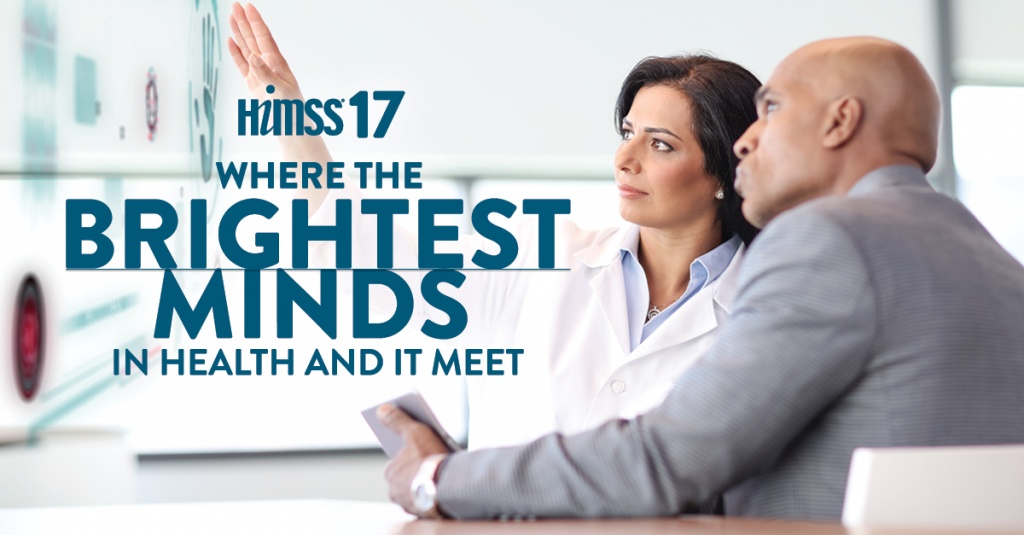HIMSS 17 is right around the corner and TopLine MD is looking forward to hearing the latest on the ever-changing health IT landscape. There’s so much excitement for all the possibilities in healthcare and we’re feeding off of the energy and optimism of leaders in health IT – especially our Chief Healthcare & Innovation Officer, Dr. Geeta Nayyar, a HIMSS 17 social media ambassador.
The HIMSS conversation is already off and running with diverse health IT ideas, but there are a couple of things that most health IT leaders agree on as we kick off 2017:
– This is the year real change will start – the paradigm shift is underway, minds are opening and attitudes are changing about the importance of the patient’s role in healthcare.
– Artificial intelligence (AI) will be an invaluable tool in uniting our objectives along our journey to the triple aim.
Dr. Nayyar asked her fellow social media ambassadors to share their unique perspective and health IT predictions for 2017. Here’s part one of what they had to say about our journey toward improving healthcare.
“This is the year we see the emergence of the ‘learning health system.’ With the advent of machine learning and AI, and with the perfect storm of healthcare related needs and opportunities, we will see a true emergence of intelligent systems that will learn and get better over time.”
Rasu Shrestha, MD, MBA
Chief Innovation Officer, UPMC
@RasuShrestha“Actionable data and patient empowerment are two hot topics at HIMSS this year. We’re going to see a whole slew of applications that take data from clinical decision support at the point of care or real-time analytics that assesses a patients’ risk, and make it actionable. Patient empowerment is going to be enhanced with applications for self-scheduling, patient communication through text and telemedicine and possibly even the first healthcare chatbots.”
John Lynn
Internet Entrepreneur and Blogger
@techguy“I am more hopeful of what shifts we will see across the industry as a whole as opposed to solely what shifts we will see health IT impact.
– We will continue to move away from fee-for-service and place greater emphasis on value-based care, but it will take partnering with patients.
– We will start to see that value-based care begins with value realization for patient partners.
– We will start to see patients as people and recognize that treating the causes of the causes and taking these impacts into consideration (such as social determinants) play a far greater role in achieving health + care than we previously realized
– Connected health technology will only continue to increase in use, but its effectiveness will waiver until we are able to personalize and optimize it to the individual patient at the N of 1.
– We will start to use more data from outside the clinical setting to identify opportunities to help drive behavior modification and improve population health, moving from precision medicine to precision personalization with how we intervene, care for, and engage patients.”Bill Bunting
Co-Founder of Aloha Health, Inc.
@WTBunting“Fee-for-value will continue to grow and evolve. Whether government-driven bundled payments, or provider-created risk-contracting, or approaches we’ve not invented yet — there will be “more” of it in 2017. As a result, HIT will have to focus significant efforts on our analytics capability, swept forward by specific business and clinical requirements coming from the fee-for-value effort.
In turn, the information we need to support this expanding healthcare model, and the ability to acquire it, will drive our choices/efforts about applications and workflow, which will, ultimately, drive our infrastructure and technology decisions in reference to — cloud, security, risk, stability, etc.
We will need agile generation of information to make the best business and clinical decisions, in a form that makes it easy to consume. We’ll certainly create dashboards, but I think we’ll spend more time on artificial intelligence, interoperability, and integration of broader decision-support into our transactional systems.”
Drex DeFord
President, Drexio Digital Health
@drexdeford1. Workflow is the new black.
2. Everyone will rebrand data as workflow.
3. Some will succeed gloriously; others will fail and look foolish.Charles Webster, MD
President, EHR Workflow Inc.
@wareFLO
These predictions just touch the surface of how health IT will be moving forward and evolving the healthcare environment in 2017.
Remember to check in with TopLine MD throughout the year to find out how these predictions – many of which may become reality – will affect patient and provider choices going forward.




